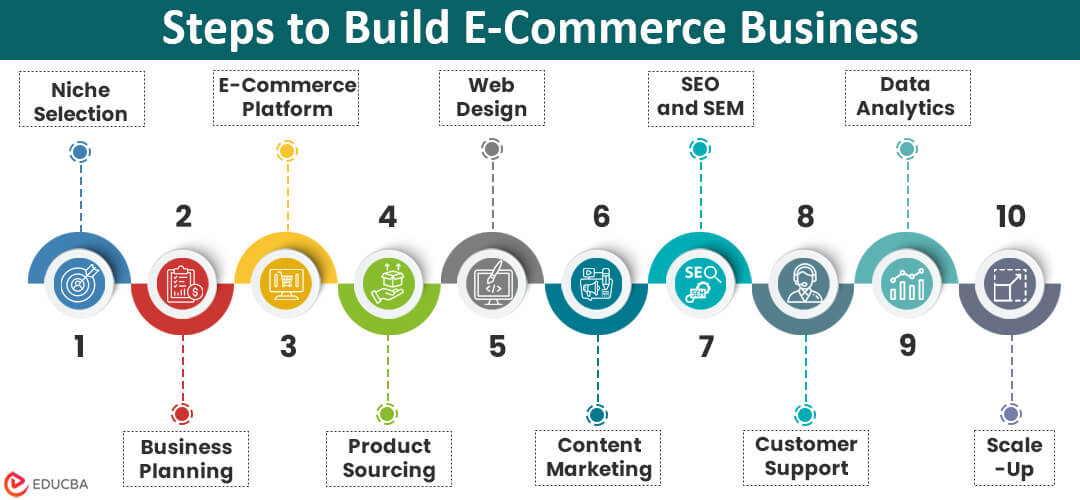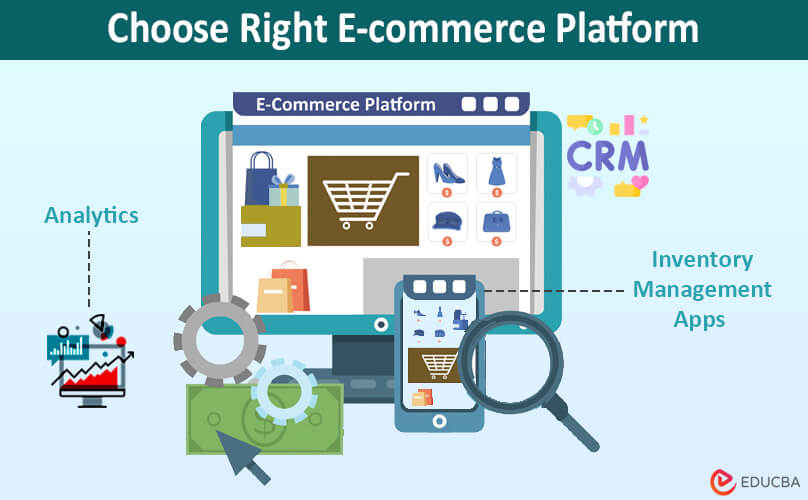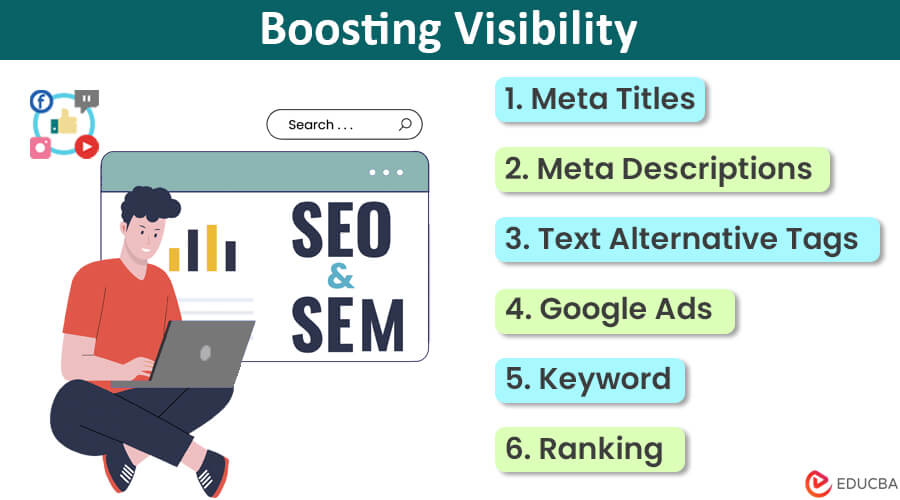
How to Build an E-Commerce Business?
E-commerce has experienced significant growth, offering entrepreneurs a fantastic opportunity to build profitable online businesses. Starting an e-commerce business from scratch is challenging, but the potential for profit makes it worthwhile. Building a successful e-commerce business involves stages that demand careful planning and consideration; this article will guide you through every stage of how to build an e-commerce business.
15 Key Steps to Build an E-commerce Business
To build an e-commerce business, it involves several key steps. Here is a comprehensive guide to help you start and grow your online store:
1. Niche Selection: Finding Your Market
The first and most significant step you should take on your way to e-commerce is to identify a suitable market segment. According to Eric Lam, Head of Business Strategy at Los Angeles Tax Appeal, “Doing thorough market research helps you make smart decisions based on real information. You have to be guided by what you love and, at the same time, choose a niche that has a huge target market, medium competition levels, and potentiality for profits. Use tools like Google Trends, keyword research, and checking out your competition to find opportunities in your chosen niche. It’s important to monitor changing trends to meet customers’ wants.
2. Business Planning: Developing a Solid Strategy
“Having a good business plan is important for success. The plan should highlight what sets your business apart, who your customers are, and how you will promote your business. Precisely, it should specify the target market. However, a comprehensive financial strategy that involves revenue predictions, expenses, and break-even analysis must be present. You should revise your business plan regularly to ensure it fits your goals amidst changing market dynamics,” says Imran Khan, Director at Home Detail
3. E-commerce Platform: Choosing the Right Technology
Selecting an e-commerce platform is a decision that requires careful thinking. Gerrid Smith, CMO of Joy Organics, says, “When choosing a platform, think about how well it can grow after the start. Check if you can customize it, use different payment methods easily, and if it’s simple. It should also work well with other tools like analytics, customer relationship management (CRM), and inventory apps. Remember that the right platform can make things easier for users and improve how well your business runs.”
4. Product Sourcing: Finding Suppliers
Having good relationships with suppliers is important for getting quality products on time. Research whether your business involves drop shipping, manufacturing, or buying dropshipping products. Ensure the supplier is qualified, ask for samples, and agree on good terms. “Always keep communication open and have backup suppliers to avoid issues getting products. Customers trust your business more when the source of your products is reliable and consistent,” shares Sam McKay, CEO of Enterprise DNA.
5. Web Design: User-Friendly Experience
The design of your website can greatly influence user experience. Choosing the right ecommerce website builder is the first step in creating a seamless and impactful online shopping experience. “Besides being responsive on mobile phones, you need to emphasize the speed of your website, how easy it is to navigate, and its visual appeal. Ensure you have clear and concise product descriptions, high-resolution photographs, and a smooth checkout process. To intuitively guide users through your website, implement user interface (UI) and user experience (UX) practices. To stay ahead of the competition, you should continuously optimize your site’s design based on user feedback and emerging trends,” adds Julia Dunlea, VP of Marketing at Akkio
6. Content Marketing: Building Brand Awareness
Content marketing is a successful approach that may help to create brand awareness amongst people and connect with them. You should create the usual blog articles, but it should also be considered to come up with various types of content like videos, infographics, and podcasts. The content you make must be useful, in line with the traits of your business, and resonate with the needs and desires of your target audiences. Therefore, implement a content calendar to keep your message consistent and use social media channels to amplify its reach,” advises Chase Hughes, Founder of ProAI
7. SEO and SEM: Boosting Visibility
“Search engine optimization (SEO) and search engine marketing (SEM) are two important components. This can bring both organic and sponsored visitors to your website. Exhaustive keyword research should be carried out to discover high-value keywords/phrases related to your niche. Optimize on-page elements like meta titles, descriptions, and text alternative tags, among others to increase organic search rankings. Furthermore, think about Google Ads or similar platforms for incorporating search engine marketing campaigns that would enable immediate visitors with high intent levels,” says Yates Jarvis, Founder & Principal at 2 Visions. Thus, you should regularly monitor your SEO/SEM strategies in line with performance data and modify them accordingly.
8. Customer Support: Giving Priority to Customer Delight
Lisa Ockinga, Chief Product Officer at Ling, states, “Exceptional customer service provided by e-commerce businesses can be a competitive edge. Spend on support solutions that are available through various channels, such as email, live chat, and calling assistance. Promptly respond to inquiries from customers, addressing problems with compassion and expertise. Utilize self-service tools such as frequently asked questions (FAQs). It should be able to search for answers independently. Request for client feedback that will help improve the quality of your products, services, and the overall experience you deliver to your customers. Your loyal customers can become the most passionate promoters for your business.”
9. Data Analytics: Making Decisions Based on Information
Make sure you use data to make smart decisions and improve your strategies. Instead of just basic tools like Google Analytics, consider using advanced platforms that give you more insights into what customers do on your website. Features like heatmaps, session recordings, and conversion rate tracking help you see how people use your site. Try different things by doing A/B testing to determine what works best for your e-commerce strategies and make improvements based on that information.
10. Scale-Up: Business Expansion
When you want your online store to grow, planning carefully and using your resources wisely is important. You can reach more people by selling in new areas in your country and other countries. Collaborating with other businesses that complement yours is a good idea to help with this. To handle more customers, you need good systems for managing your stock, fulfilling orders, and working with shipping partners. Create a comprehensive growth plan outlining the finances, human resources, and technological investments for successful business expansion. Partnering with eCommerce developers is crucial for scaling your website’s functionality and handling increased traffic.
11. Customer Retention Strategies: Fostering Loyalty
In online shopping, where competition is tough, it’s often more affordable to keep customers you already have than to find new ones. To be successful in the long run, you need strategies to keep your customers coming back:
- Loyalty Programs: Set up a rewards program to encourage customers to keep buying from you. Give them points, discounts, or special access if they stick with your store.
- Personalized Suggestions: Use data to recommend products to customers based on what they bought before or looked at on your site. This makes their shopping experience better.
- After-Sale Check-ins: Send thank-you notes, ask for feedback, and offer help after a customer buys something. Show them that you care about their happiness.
Building strong customer relationships allows you to grow your business without spending much on advertising. If customers are happy, they will probably buy from you again and tell their friends about your store.
12. Mobile Commerce (M-Commerce): Capturing the Mobile Audience
Mobile commerce, also known as m-commerce, is growing rapidly due to the widespread availability of smartphones. To reach mobile users, think about these strategies:
- Responsive Design: Make sure your online store works well on phones by using a design that adjusts to different screen sizes.
- Mobile App: Create a special app for your store. This app can make shopping easier and offer personalized messages and deals just for mobile users.
- Mobile Marketing: When you promote your store, make sure your ads and messages work well on phones. You can use text messages, mobile ads, and special app deals to connect with mobile shoppers.
If you focus on mobile commerce, you can reach more customers who like to shop on their phones. It’s a good way to take advantage of the increasing number of people who prefer mobile shopping.
13. Social Commerce: Leveraging Social Media Platforms
Social media platforms have developed into highly effective tools for conducting business online. Here are some ways you can use them:
- Instagram Shopping: Use Instagram’s shopping features like product tags and shoppable posts. This lets people buy things directly from the posts they see.
- Facebook Shops: Create a Facebook Shop to show your products. It makes it easy for customers to buy from you, and you can connect it to your website’s shopping cart.
- Influencers: Team up with social media influencers who are experts in your field. They can help show off and talk about your products to those who follow them.
- Direct Selling: Platforms like Pinterest let you sell things directly through Buyable Pins. This makes buying stuff online simpler.
14. Payment Processing: Streamlining Transactions
Ensuring your online store handles payments quickly is important for giving customers a smooth experience. Here are some things to check:
- Multiple Payment Gateways: Give customers different payment options, like credit cards, debit cards, digital wallets (such as PayPal and Apple Pay), and even options to buy now and pay later.
- Secure Transactions: Use strong security measures, like SSL certificates and tools, to detect fraud. This keeps your company and customers safe.
- International Payment Processing: If you plan to sell to people in different countries, consider accepting different currencies, receive international payments, and offer various payment methods. This way, you can approach a wide range of customers.
15. Legal and Compliance Considerations: Protecting Your Business
In the world of online selling, it’s really important to follow the rules and make sure you are keeping things legal and fair for your customers:
- Privacy Policy: Make a clear and detailed privacy policy that tells people how you gather, use, and protect their information. Ensure that you follow the laws that apply to this, like the General Data Protection Regulation (GDPR).
- Terms of Service: Set up specific rules for your business and customers. These are terms of service and help everyone understand what’s expected.
- Transaction Policies: To build trust with your customers, be open about your return and refund policies, delivery times, and how they can contact your customer service. Make sure everything is explained clearly.
Final Thoughts
To successfully build an e-commerce business, the journey involves many different aspects and requires careful planning, adaptation, and a strategy focused on the client. New things like virtual shopping, voice buying, and smart personalization will be important in the future of online business. Also, being eco-friendly and socially responsible will matter to customers. To do well, businesses must keep up with these changes by following the step-by-step guide on how to build an e-commerce business, focusing on making customers happy and being open to new ideas. Staying ahead in the online world means being flexible and always looking for better ways to do things.
Recommended Articles
We hope this article on how to build an e-commerce business was beneficial. To learn more, refer to the articles below.




